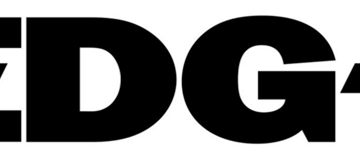2025-03-28 10:55:00
terrytao.wordpress.com
I’ve just uploaded to the arXiv the paper “Decomposing a factorial into large factors“. This paper studies the quantity , defined as the largest quantity such that it is possible to factorize
into
factors
, each of which is at least
. The first few values of this sequence are
(OEIS A034258). For instance, we have , because on the one hand we can factor
but on the other hand it is not possible to factorize into nine factors, each of which is
or higher.
This quantity was introduced by Erdös, who asked for upper and lower bounds on
; informally, this asks how equitably one can split up
into
factors. When factoring an arbitrary number, this is essentially a variant of the notorious knapsack problem (after taking logarithms), but one can hope that the specific structure of the factorial
can make this particular knapsack-type problem more tractable. Since
for any putative factorization, we obtain an upper bound
thanks to the Stirling approximation. At one point, Erdös, Selfridge, and Straus claimed that this upper bound was asymptotically sharp, in the sense that
as ; informally, this means we can split
into
factors that are (mostly) approximately the same size, when
is large. However, as reported in this later paper, Erdös “believed that Straus had written up our proof… Unfortunately Straus suddenly died and no trace was ever found of his notes. Furthermore, we never could reconstruct our proof, so our assertion now can be called only a conjecture”.
Some further exploration of was conducted by Guy and Selfridge. There is a simple construction that gives the lower bound
that comes from starting with the standard factorization and transferring some powers of
from the later part of the sequence to the earlier part to rebalance the terms somewhat. More precisely, if one removes one power of two from the even numbers between
and
, and one additional power of two from the multiples of four between
to
, this frees up
powers of two that one can then distribute amongst the numbers up to
to bring them all up to at least
in size. A more complicated procedure involving transferring both powers of
and
then gives the improvement
. At this point, however, things got more complicated, and the following conjectures were made by Guy and Selfridge:
In this note we establish the bounds
as , where
is the explicit constant
In particular this recovers the lost result (2). An upper bound of the shape
for some was previously conjectured by Erdös and Graham (Erdös problem #391). We conjecture that the upper bound in (3) is sharp, thus
which is consistent with the above conjectures (i), (ii), (iii) of Guy and Selfridge, although numerically the convergence is somewhat slow.
The upper bound argument for (3) is simple enough that it could also be modified to establish the first conjecture (i) of Guy and Selfridge; in principle, (ii) and (iii) are now also reducible to a finite computation, but unfortunately the implied constants in the lower bound of (3) are too weak to make this directly feasible. However, it may be possible to now crowdsource the verification of (ii) and (iii) by supplying a suitable set of factorizations to cover medium sized , combined with some effective version of the lower bound argument that can establish
for all
past a certain threshold. The value
singled out by Guy and Selfridge appears to be quite a suitable test case: the constructions I tried fell just a little short of the conjectured threshold of
, but it seems barely within reach that a sufficiently efficient rearrangement of factors can work here.
We now describe the proof of the upper and lower bound in (3). To improve upon the trivial upper bound (1), one can use the large prime factors of . Indeed, every prime
between
and
divides
at least once (and the ones between
and
divide it twice), and any factor
that contains such a factor therefore has to be significantly larger than the benchmark value of
. This observation already readily leads to some upper bound of the shape (4) for some
; if one also uses the primes
that are slightly less than
(noting that any multiple of
that exceeds
, must in fact exceed
) is what leads to the precise constant
.
For previous lower bound constructions, one started with the initial factorization and then tried to “improve” this factorization by moving around some of the prime factors. For the lower bound in (3), we start instead with an approximate factorization roughly of the shape
where is the target lower bound (so, slightly smaller than
), and
is a moderately sized natural number parameter (we will take
, although there is significant flexibility here). If we denote the right-hand side here by
, then
is basically a product of
numbers of size at least
. It is not literally equal to
; however, an easy application of Legendre’s formula shows that for odd small primes
,
and
have almost exactly the same number of factors of
. On the other hand, as
is odd,
contains no factors of
, while
contains about
such factors. The prime factorizations of
and
differ somewhat at large primes, but
has slightly more such prime factors as
(about
such factors, in fact). By some careful applications of the prime number theorem, one can tweak some of the large primes appearing in
to make the prime factorization of
and
agree almost exactly, except that
is missing most of the powers of
in
, while having some additional large prime factors beyond those contained in
to compensate. With a suitable choice of threshold
, one can then replace these excess large prime factors with powers of two to obtain a factorization of
into
terms that are all at least
, giving the lower bound.
The general approach of first locating some approximate factorization of (where the approximation is in the “adelic” sense of having not just approximately the right magnitude, but also approximately the right number of factors of
for various primes
), and then moving factors around to get an exact factorization of
, looks promising for also resolving the conjectures (ii), (iii) mentioned above. For instance, I was numerically able to verify that
by the following procedure:
- Start with the approximate factorization of
,
by
. Thus
is the product of
odd numbers, each of which is at least
.
- Call an odd prime
-heavy if it divides
more often than
, and
-heavy if it divides
more often than
. It turns out that there are
more
-heavy primes than
-heavy primes (counting multiplicity). On the other hand,
contains
powers of
, while
has none. This represents the (multi-)set of primes one has to redistribute in order to convert a factorization of
to a factorization of
.
- Using a greedy algorithm, one can match a
-heavy prime
to each
-heavy prime
(counting multiplicity) in such a way that
for a small
(in most cases one can make
, and often one also has
). If we then replace
in the factorization of
by
for each
-heavy prime
, this increases
(and does not decrease any of the
factors of
), while eliminating all the
-heavy primes. With a somewhat crude matching algorithm, I was able to do this using
of the
powers of
dividing
, leaving
powers remaining at my disposal. (I don’t claim that this is the most efficient matching, in terms of powers of two required, but it sufficed.)
- There are still
-heavy primes left over in the factorization of (the modified version of)
. Replacing each of these primes with
, and then distributing the remaining
powers of two arbitrarily, this obtains a factorization of
into
terms, each of which are at least
.
However, I was not able to adjust parameters to reach in this manner. Perhaps some readers here who are adept with computers can come up with a more efficient construction to get closer to this bound? If one can find a way to reach this bound, most likely it can be adapted to then resolve conjectures (ii) and (iii) above after some additional numerical effort.
Keep your files stored safely and securely with the SanDisk 2TB Extreme Portable SSD. With over 69,505 ratings and an impressive 4.6 out of 5 stars, this product has been purchased over 8K+ times in the past month. At only $129.99, this Amazon’s Choice product is a must-have for secure file storage.
Help keep private content private with the included password protection featuring 256-bit AES hardware encryption. Order now for just $129.99 on Amazon!
Help Power Techcratic’s Future – Scan To Support
If Techcratic’s content and insights have helped you, consider giving back by supporting the platform with crypto. Every contribution makes a difference, whether it’s for high-quality content, server maintenance, or future updates. Techcratic is constantly evolving, and your support helps drive that progress.
As a solo operator who wears all the hats, creating content, managing the tech, and running the site, your support allows me to stay focused on delivering valuable resources. Your support keeps everything running smoothly and enables me to continue creating the content you love. I’m deeply grateful for your support, it truly means the world to me! Thank you!
|
BITCOIN
bc1qlszw7elx2qahjwvaryh0tkgg8y68enw30gpvge Scan the QR code with your crypto wallet app |
|
DOGECOIN
D64GwvvYQxFXYyan3oQCrmWfidf6T3JpBA Scan the QR code with your crypto wallet app |
|
ETHEREUM
0xe9BC980DF3d985730dA827996B43E4A62CCBAA7a Scan the QR code with your crypto wallet app |
Please read the Privacy and Security Disclaimer on how Techcratic handles your support.
Disclaimer: As an Amazon Associate, Techcratic may earn from qualifying purchases.









































































































